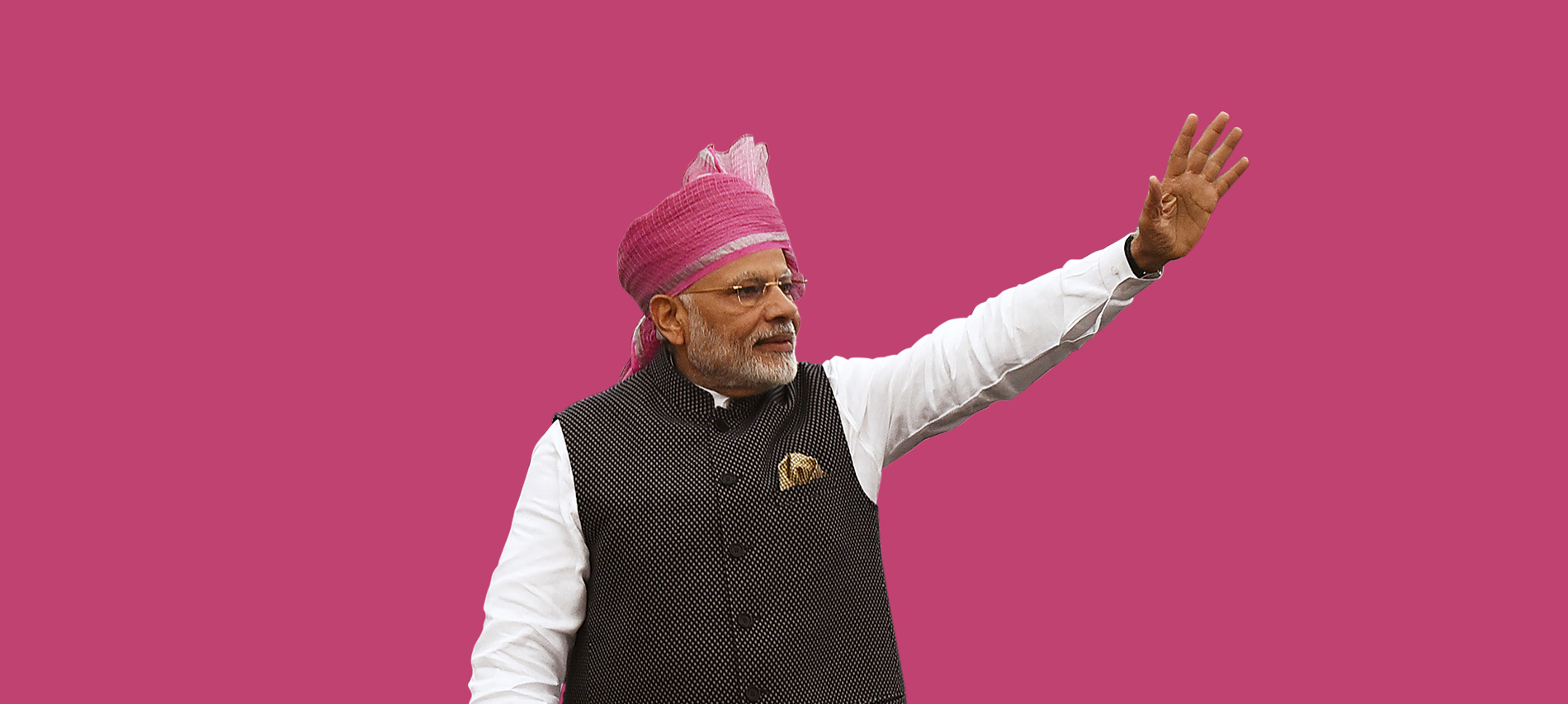India has the second-largest legal profession in the world, but the systemic delays and chronic impediments of its judicial system inspire little confidence in the common person. In India’s Legal System, renowned constitutional expert and senior Supreme Court lawyer Fali S. Nariman looks for possible reasons.
This frank and thought-provoking book offers valuable insights into India’s judicial system and maps a possible road ahead to make justice available to all. Here are the five challenges that the book underscores.
Proliferation of Appeals

Judicial Interference in Administrative Actions

Judicial Attitudes

Excessive burden of case law, and lack of effective case law management

Overcommercialization

In your opinion, what is the gravest challenge facing the Indian Legal System? We would love to know!
Tag: Bulletin Board
6 Every Day struggles of an Overweight Girl
Life seems a tad tough when you are not the “ideal” weight. It seems tougher when you are 25 and single. Your family, friends, and society start giving you the ‘you’re next’ nudges as you reach the ‘marriageable’ age.
In Encounters of a Fat Bride, Samah Visaria tells the story of Madhurima Pandey who is the ideal age for marriage, but not the ideal weight. Riddled with jovial and witty encounters, Samah tells the story of Madhurima’s struggle to her D-Day.
Here are six struggles that Madhurima faces which will make you feel for her.
Oh! Why can’t things in real life be as perfect as in the reel life.

Caught between the weighing scale and school.

Promises! Promises!

That’s a real disease.

The heaviest metamorphosis.

Rather be overweight than unhappy.

Are Madhurima’s struggles resonant with every girl’s? Tell us what you think.

6 Fascinating Political Strategy Pointers from a Gujarati Classic
K.M. Munshi was one of Gujarat’s most well-known literary writers. Munshi’s Glory of Patan, the first book in the epic trilogy is a landmark and bestselling classic in Gujarat. A mix of romance and politics, this fast-paced saga is sure to delight readers of historical fiction.
Here are six fascinating points of political strategy from the K. M. Munshi’s masterpiece.
Honour Comes First

One Kingdom, One Rule

Where Expediency Matters

Winning is Everything

Measured Tactics, Calculated Risks

Religion’s Nemesis

Get the bestselling epic about a key moment in Gujarat’s history here!

6 Luminous Lessons from Dharmashastras to Look Out For
Business law in medieval and early modern India developed within the voluminous and multifaceted texts called the Dharmashastras. These texts laid down rules for merchants, traders, guilds, farmers, and individuals in terms of the complex religious, legal, and moral ideal of dharma.
The Dharma of Business – an exciting new book by Donald R. Davis, Jr. – provides a new perspective on commercial law in this period. It makes a compelling case for the relevance of the dharma of business to our own time.
Here are six lessons from Dharmashastras that are relevant in our modern age.
The Dharma of an Employee

The Dharma of an Employer

When not putting one’s best foot forward

The Culture of Rewarding Excellence

Tax for Welfare

Greed, the Destroyer

Want to apply ancient wisdom to your own work and issues at workplace? Get The Dharma of Business here!

6 Things You Probably Didn’t Know About Pakistan
Meena Menon was The Hindu’s correspondent in Islamabad September 2013 to May 2014. During her time in the neighbouring country, despite the restrictions placed on her movements, Menon managed to write on a range of subjects covering swathes of life in Pakistan. Her book, Reporting Pakistan is a nuanced and wide-ranging account of a difficult yet exciting assignment which uncovers some of the hidden yet marvelous facets of the fabled “enemy”.
Here are six things you probably didn’t know about Pakistan:
Contrary to popular opinion, people in Pakistan are very welcoming of Indians

The salesman, according to Menon, was very solicitous and promised to record any film she wanted which he didn’t have on his list.
After her deployment, one of the first assignments undertaken by Meena Menon was interviewing a journalist named Ali Chishti. Chishti, a journalist with Friday Times, was forced to leave his home in Karachi.

Chishti was kidnapped and tormented for his writings on national and security issues along with the Muttahida Qaumi Movement (MQM).
Although majority of the population in Pakistan is Muslim, there are many other communities that live in the country, making it an extremely diverse society. During her time, Menon spoke to the members of the persecuted Ahmadi community. Constitutionally, the Ahmadis or Ahmadiyya or Qadianis had no right to be called Muslims. They could do nothing other Muslims could. They were heretics, according to the law, and could pray only in ‘a place of worship’ which could not be called a mosque.

In the same interview, X added, religious persecution started with the Ahmadis and when that was successful, with the government doing all it could to declare them non-Muslims, other communities were targeted, like the Hindus, Christians and Sikhs.
Rimsha Masih, a mentally challenged teenager, was accused of burning pages of Quran.

Though she was acquitted in November 2012 of all charges after it was found that the cleric who filed the case against her had planted evidence, the residents of her former neighbourhood were terrorized and forced to leave. That isolated tent camp in many ways, according to Menon spoke of hate and discrimination.
Mohammad Ali Asghar, a resident of Edinburgh, was accused of printing visiting cards in the name of Prophet Mohammad.

Menon however, found out that the real story was different. Asghar, who came to Rawalpindi in 2010, was shocked to find one of the two properties he owned there occupied by a notorious land grabber. He filed a complaint against him before leaving for the Haj pilgrimage, but it was Asghar who was arrested on his return. Predictably, all the evidence, including the letters, was handed over to the police by the complainant, who had many anti-corruption cases against him.
A gardener in Islamabad is the VIP of the city

Meena Menon, while staying in Islamabad, also observed that her neighbours obsessively cut and pruned their hedges to resemble flowers or animals—topiary.
Tell us which side of Pakistan astonished you the most?

The Ups and Downs of Narendra Modi’s Governance
Uday Mahurkar in his latest book Marching with a Billion takes stock of Narendra Modi’s three years in power. Focusing on key areas of governance like infrastructure, foreign affairs, finance, digital technology, etc. Mahurkar showcases the work of the present government and the monumental changes the prime minister has brought about.
Here are ten highlights of Narendra Modi’s tenure:
Nearly 27 crore poor people opened their bank accounts under Narendra Modi’s Pradhan Mantri Jan-Dhan Yojana.

Uday Mahurkar points out that India has emerged as the number one global destination for FDI because of these two factors.

There have been disputes going on between investors and shipping ministry on account of the retrospective regulations slapped by the A.B. Vajpayee government fifteen years ago.

Uday Mahurkar notes that the relationship Modi is forging with the US, cutting across that country’s web of diplomatic calculations, is also new in the history of India’s diplomacy. The way Modi capitalized on India’s strength during his June 2016 US visit, which took the US Congress by storm and instilled the fear of isolation in the heart of Pakistan, and even China, left the world powers impressed.

Modi’s government is probably the first since Independence that has made a real attempt to involve the people in the process and, that too, quite successfully.

Modi, who has always been ahead of his times in adopting the latest technology, told the officials that he wanted to link people to digital technology like nowhere else in the world.

One big criticism of the government on reforms is what many people call its failure to disinvest big PSUs like Air India, SAIL and CIL. There is a view that taxation and banking reforms could have been faster. Mahurkar quotes a senior BJP leader with sound knowledge of the Indian economy who says: ‘What was needed was a transformational approach on reforms, but many steps indicate the government’s approach has been selectively incremental.’

Mahurkar observes that Modi’s China diplomacy signals a great change in India’s attitude towards that nation—from a defensive posture maintained over several decades to that of equal, controlled aggression. Modi gave another sign of India’s new stance soon after the G20 summit in the way he chose to react to the China–Philippines dispute in the South China Sea at the summit of the Association of Southeast Asian Nations at Laos.

According to Uday Mahurkar, the prime minister believes that the country has to overcome the urban–rural digital divide if it is to move forward.

Uday Mahurkar points out that there have been projects under Nitin Gadkari, Minister of Road Transport and Highways of India in Modi government, which have not taken-off yet.

Tell us what you think of Narendra Modi’s governance in the past three years.

Demystifying Faiz Ahmed Faiz- 6 Things You Didn’t Know About the Poet
Faiz Ahmed Faiz is one of the greatest Urdu poets of the twentieth century. He is loved and remembered for his revolutionary verses, his delicate subtlety, and his soulful poems of love.
The Colours of My Heart, translated by Baran Farooqi, celebrates some of Faiz’s greatest works. It also includes an illuminating introduction to Faiz’s enchanting life and legacy.
Here are 6 little known things about the poet who continues to inspire us:
He studied philosophy and English literature in Lahore and finished an M.A. in Arabic.

Naqsh-e-Fariyaadi (The supplicant’s portrait), his first collection of poems, was published in 1941. All his collections are small, and even they contain some unfinished poems.

He was even deprived of writing material during the period of his imprisonment. His poems were smuggled out of prison or sent out with his letters and circulated widely.

The poem expresses disappointment on two levels: The Partition and the carnage that accompanied it.

Faiz was also active in the trade union movement. In 1951, he also became the vice president of the Trade Union Congress, the labour wing of the Communist Party of Pakistan.

Faiz marked this recognition as a humbling experience.

So, which is your favourite Faiz poem?

The Rise and Fall of the Mighty Kingdom of Ranjit Singh
Stories of Maharaja Ranjit Singh’s heroics continue to mesmerize generations, even after 178 years of his death.
Khushwant Singh in his two books The Fall of the Kingdom of Punjab and Ranjit Singh: Maharaja of the Punjab draws a fascinating portrait of one of the most powerful ruler of India, the brilliance of his kingdom, and the unfortunate downfall of the Kohinoor that was Punjab.
Here are six instances which capture the rise and fall of the kingdom of Punjab.
After his accession in 1801, Maharajah Ranjit Singh invited talented Muslims and Hindus to join his service and paid assiduous respect to their religious institutions by participating in their festivities.

Besides its riches, Amritsar had sanctity in the eyes of the Sikhs. It was founded by the fourth Guru, Ram Das, and it was here that the fifth Guru, Arjun, had compiled their scripture, the ‘Adi Granth’, and built the temple in the centre of the sacred pool.

Ranjit Singh built his kingdom like a fortress that could not ever be breached.

The English made no secret of their intentions to annex Punjab. Even in his old age, Ranjit Singh tried with all his might to foil the English’s plans.

Ranjit Singh’s choice of successor, Kharak Singh was the least suited of the brothers, having inherited nothing from his illustrious father except his plain looks and bad habits—particularly the love for laudanum and hard liquor.

After the accession of Punjab by the British empire and the subsequent surrender, a veteran soldier remarked ‘Aj Ranjit Singh mar gaya (Today Ranjit Singh has died).’

For more amazing facts of the remarkable Maharajah Ranjit Singh and his empire, read Khushwant Singh’s The Fall of the Kingdom of Punjab and Ranjit Singh: Maharaja of the Punjab.
Five significant contributions of Islam’s advent in India
The relationship between Hindu and Islamic traditions has existed in the subcontinent since the Persians set foot in Asia. The relationship has seen a lot turns and turmoil ever since. In the light of recent political climate, the alliance has become more relevant.
Historian Raziuddin Aquil, in his book The Muslim Question: Understanding Islam and Indian History has given a poignant and detailed account of the evolution of Islam from its prime to its transformation in India due to colonialism.
Here are five instances which capture the legacy of Islam in India.
India’s integration of Islam also opened a transfer of fresh political ideas which had evolved over the centuries in Iran and Greece. In many ways, this was a re-emergence of political ideas in a new garb.

There was also an emergence of ‘syncretic’ traditions in different regions which did not conform to any particular religion.

Although the main undertaking of Sufi traditions was to restrict any deviations from the Muslim rule, their belief in unity within multiplicity contributed to religious synthesis and cultural amalgamation.

Jalal-ud-Din Muhammad Akbar due to his inclusive religious and administrative policies is regarded as one of the greatest rulers of India.

Under Akbar’s rule, man’s reason (aql), not tradition (naql), was acknowledged as the only basis of religion.

Read more about Islam’s journey in Raziuddin Aquil, in his book The Muslim Question: Understanding Islam and Indian History. Get your copy here.
5 Ways to Overcome Writer’s Block
If you’re a writer, you must have experienced the treacherous phenomenon called the ‘writer’s block’. It is the phase when you feel stuck and drinking any amount of coffee cannot get you to finish that one page.
Michael Burns, author of Hack Into your Creativity, gives us some brilliant writing tips and prompts for every type of writer to help them out of the ‘block’.
Here are five easy and exciting ways you can overcome writer’s block:
Writing Prompts

What Happens Next?

Character Building

Genres

Everyday Magic


















